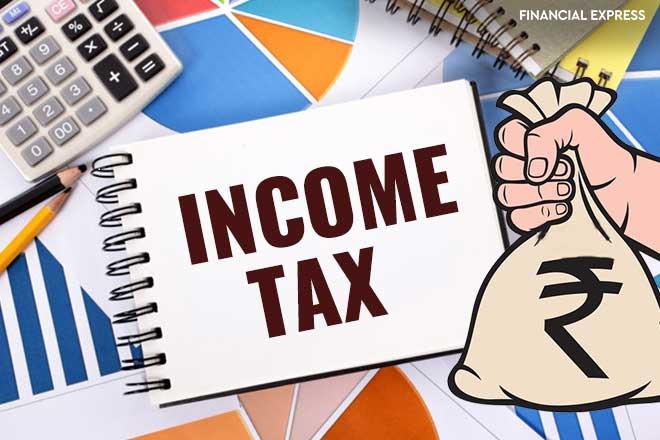
Filing income tax returns is a crucial and mandatory activity for every responsible and law-abiding citizen of the country. Some tend to consider it as a burdensome procedure, but it forms the foundation for the government to determine the amount and means of expenditure of the citizens.
The government, based on this record, enables refunds for the assessee in addition to a host of other benefits. Skipping or delaying your filing could mean foregoing a possible tax return as well as inviting scrutiny from the Income Tax department.
As citizens pay their taxes, they are contributing their share to keep the health of the government and national economy intact. The government uses these taxes to fund adequate healthcare, education, technological innovation and development projects that in turn directly benefit the tax paying citizen.
At times, filing an income tax return can seem like an unduly complicated procedure due to a lack of educational resources and all the confusing terminology involved. We’ve compiled this handy checklist to equip you with the right information required for an effortless ITR filing, all in one place.
Step 1: Determining the Right ITR To File
The income tax department has provisions for seven ITR forms based on the sources of income of the citizens. One has to choose the appropriate ITR form according to their income. However, it’s not mandatory that the number of ITR forms will stay the same every year.
The ITR-1 form is the basic form for people whose only sources of income are from salary and interest from a bank account. Individuals who earn their income from a business, house, or capital gains need to fill up the ITR-2 form. The ITR-1 form is also applicable for salaried individuals who own a property or a home with a salary of up to fifty lakh rupees.
As a person has to meet specific criteria to be eligible for the ITR-1 form, not every resident salaried individual will fall under that category. Therefore, it’s essential to go through the eligibility criteria for each form to understand which category to file under.
Step 2: Accurate Computation of Taxable Income
While calculating their income, individuals have to include their salary as well as earnings from other sources such as interest from a savings bank account, fixed deposit, or rental income from house or property.
All the income details have to be filled in the relevant rows and columns of the ITR forms.
There are specific categories of income where tax is not imposed, and deductions are applicable. In such cases, computing taxable income has to be done carefully. Make sure you have a track of your income from all possible sources and consult with a Chartered Accountant to determine your tax liability.
Step 3: Making Correct Calculations of Exemptions and Deductions
According to Section 80C of the Income-tax Act, 1961, there are provisions to save some amount on the taxes that are paid. People can claim deductions from income for up to Rs 1.5 lakh in a financial year if they have invested in any financial products such as ELSS tax saving Mutual funds or any specific expenses like education fees. Sometimes, people forget to claim tax deductions on such expenses.
Section 80CCD (1) allows any individual to claim for a tax deduction if they have made any contribution up to an amount of Rs 1.5 lakh to the National Pension System. Under another section, 80CCD (1B), one can additionally contribute Rs 50,000. Thus, one can claim for deduction on a total contribution of Rs 2 lakh.
Deductions are also applicable to people who have a health insurance policy under section 80D. The deduction will be based on the premium they pay towards the policy.
Step 4: Avoiding Data Mismatch of TDS in ITR
One also needs to take care that the TDS in 26AS should match with the TDS filled in Form 16 or 16A while filing ITR. Sometimes, the details don’t match, and the filed returns will be incorrect. TDS is deducted from many income sources, including salary, so the taxpayer has to ensure that the data entered in the forms are coordinated with the government data. Information regarding the tax credit from various sources can be verified from Form 26AS.
Step 5: Collect Form 16 from present and all previous Employers
Filing income tax returns can be an intimidating task for people who have changed their jobs during the financial year. It can be even more tough if they have been regularly investing money in tax-saving products during the year. In this situation, they will have to take Form 16 from their present employer as well as from their previous employers to ensure that they aren’t misrepresenting their income history.
Step 6: Getting HRA Tax Relief from Employer
HRA exemption is an important factor to determine the amount of exemption one gets from their income. In cases where the rent exceeds Rs 1 lakh, taxpayers have to submit documents of rent receipts, rent agreement, and the PAN details of the landlord if they wish to avail the HRA benefit from their employers. Absence of any of these documents mentioned above can cause a hindrance in receiving the HRA from the employer.
Step 7: Providing Proof or Documents of Tax Declaration on Time
To be able to receive an exemption in your Form 16, it’s mandatory for taxpayers to submit their tax declaration to their employers along with the proof or documents of their tax-saving investments. All the documents regarding the exemptions and deductions from the income are reflected in Form 16 during the time of e-filing.
If taxpayers don’t submit their proof and documents to their employers on time, they won’t get any deduction or tax benefit from their salary or income.
Step 8: Have all Account Credentials in place
Tax filing is an annual process. Since the account is accessed only once a year, people tend to forget their password. They are usually asked to answer one of their secret questions to reset their password, which is also something that taxpayers may forget. In such a scenario all that taxpayer needs is their PAN number in combination with their registered mobile number or their Aadhaar number to reset their password.
Step 9: Paying Advance Taxes on Time
Paying advance tax is applicable to all taxpayers irrespective of their income source. Whenever the total amount of tax debt owed by a salaried individual or business owner (tax liability) goes beyond Rs 10,000 in a financial year, they are liable to pay taxes in advance.
This advance tax is applicable to all taxpayers whether they work for a company, own a business or freelance for a living. Advance tax is paid in quarterly installments – 15% of the total tax is paid on or before 15th June; the next 45%, excluding the tax debt already cleared, is paid on or before 15th September. By the 15th of December, 75% of the tax is paid, and the final payment is made on or before 15th March.
People failing to pay advance taxes will have to pay a penalty interest.
The Bottom Line
The ITR of taxpayers indicate their income from various sources, tax debt to be paid, the tax that has been paid as well as the exemption they are supposed to receive from the government. Filing ITR is crucial as it shows that their income is from legal sources. Moreover, filing ITR on time has a positive impact on your overall credit history, making it easier to secure a loan for your personal or business needs.
However, it’s not just about being on the right side of the law. Filing taxes is a moral duty you owe to your country and your fellow citizens. It’s a badge of honour to pay taxes on time and accurately. It’s a chance to play your part and participate in the country’s progress.
Authored by:
Ankur Chaudhary
Ankur founded Goalwise an online mutual fund investment platform in 2015 to serve as a ‘Fitbit to investing’. They pioneered an investing approach making it easier for users to set, track, and achieve their long- and short-term financial goals. A passionate Algo-investor, he honed his skills as a Researcher and Portfolio Manager at leading hedge funds such as WorldQuant and Oxus investments. He is an alumnus of IIT Kanpur where he pursued Computer Science and Engineering.

